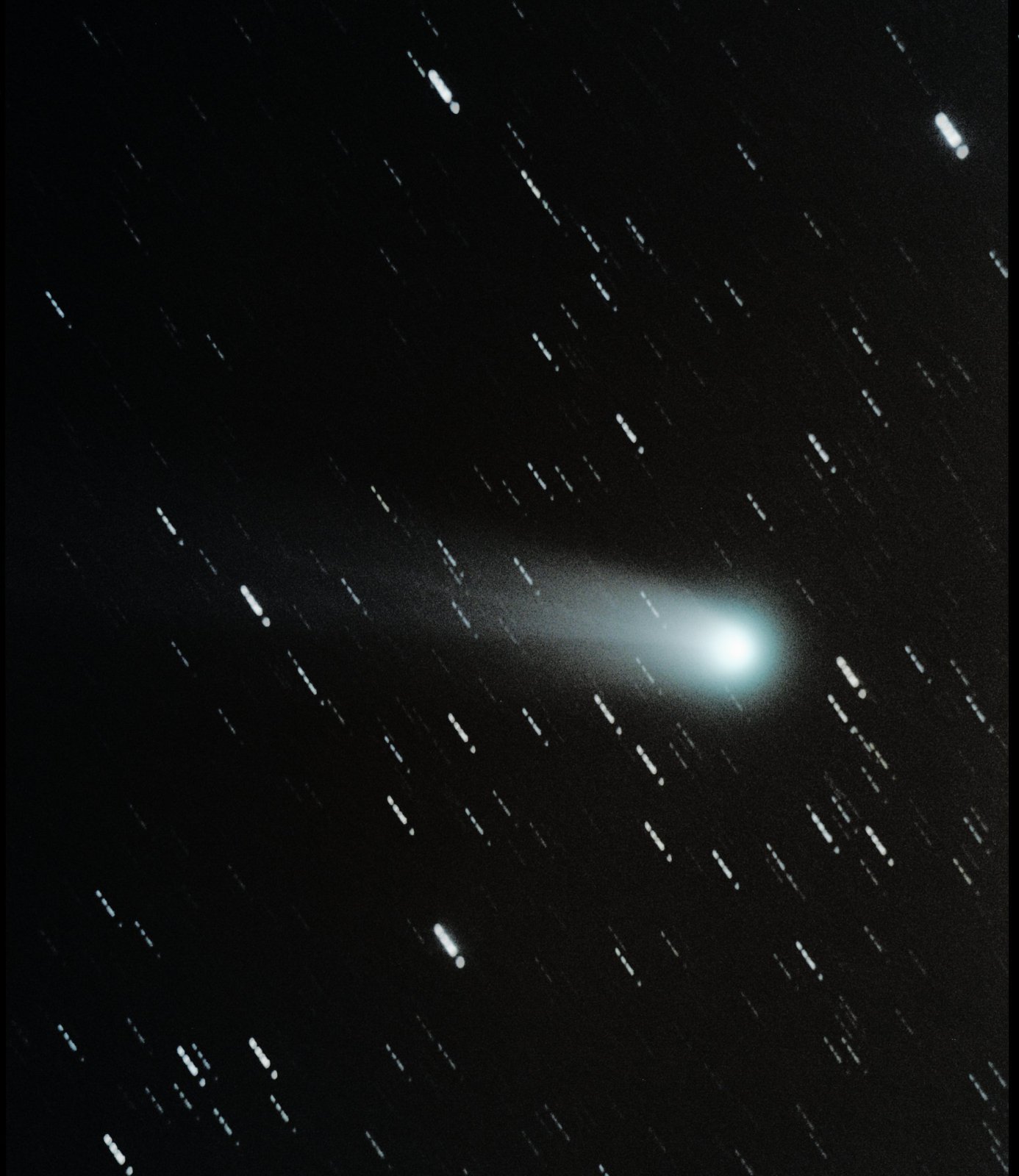So, while Comet ISON may have gone bust at the start of the month, there are other comets out there to enjoy. Comet Lovejoy, or C/2013 R1 to be precise, is currently hurtling towards the Sun at 46km per second and can be seen in the pre-dawn sky. This morning it was just below the ‘keystone’ of Hercules. The comet is due to rendezvous with the sun on Christmas Day, but unlike ISON it is not a ‘sungrazer’. Its closest distance will be about 0.8 AU (1AU = the distance at which earth orbits the Sun at). I must admit, I wasn’t too optimistic when I headed out at 5am this morning and could barely see it with binoculars, let alone the naked eye. In binoculars it is just visible as a fuzzy star, at least from my light polluted sky.
After setting up the telescope and camera in a record 20 mins, I started taking 2 minute exposures from about 5.30am, trying not to get too distracted by the Geminid meteor shower reaching its peak all around me. It was obvious from the first exposure that the camera was going to be able to pick up the tail nicely. I continued imaging until about 6.30am getting a range of 120s and 150s exposures, along with ‘dark’ frames’ for image calibration.
On reviewing the images on the PC, it was clear even going from just one exposure to the next, that there was movement of the comet against the background stars. This is because the fast moving comet it quite nearby compared to the distant stars that appear relatively stationary. I love the result in the final image – the comet hurtling towards the Sun leaving the stars in the background as a blur! The dusty tail shows nicely, and within it there is more than a hint of a couple of ion tails or streamers.

The image is a stack of 9 exposures, each of 120 seconds or 150 seconds duration. The stack has been aligned using the comet rather than the stars.
